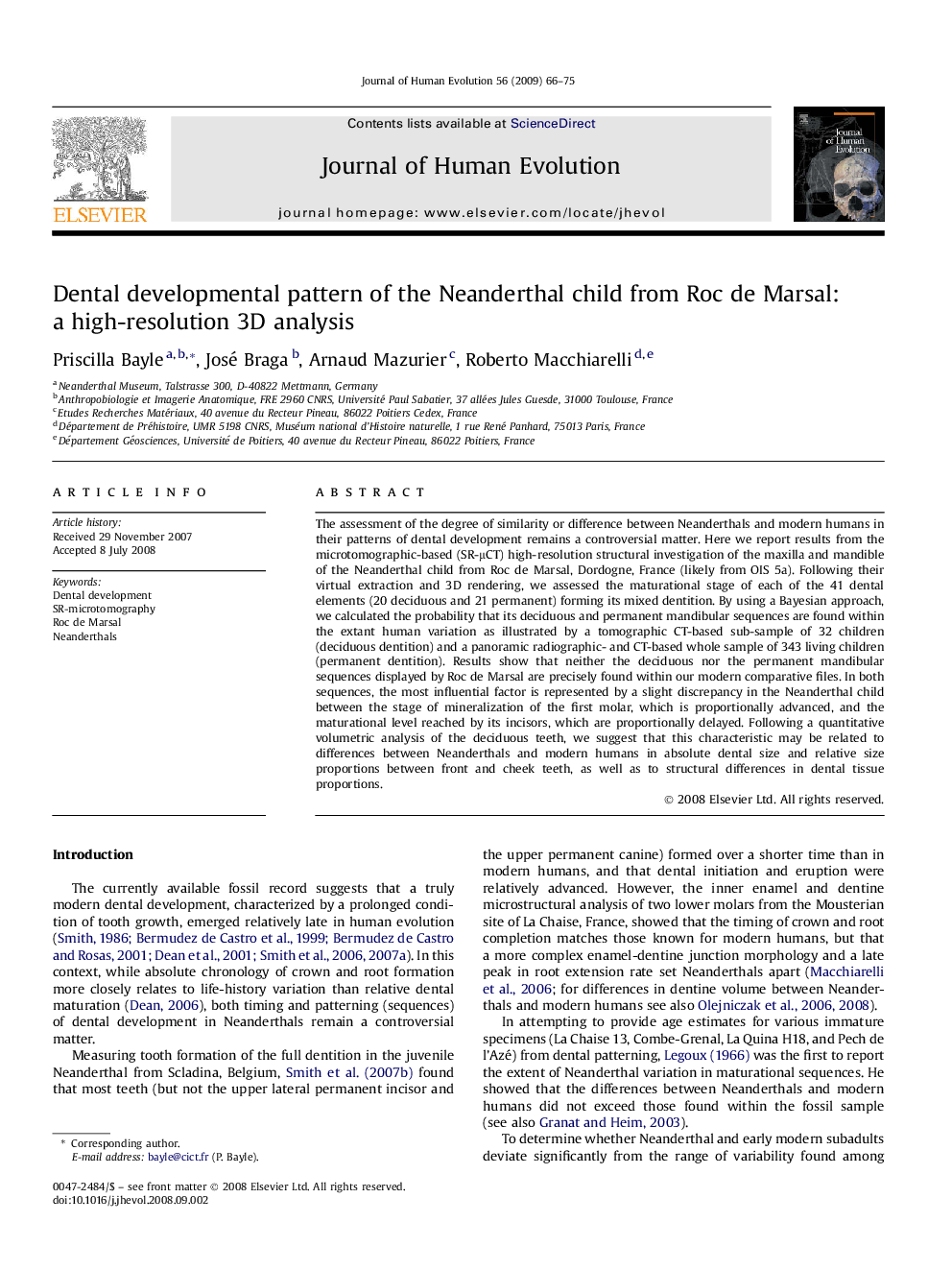| Article ID | Journal | Published Year | Pages | File Type |
|---|---|---|---|---|
| 4557079 | Journal of Human Evolution | 2009 | 10 Pages |
The assessment of the degree of similarity or difference between Neanderthals and modern humans in their patterns of dental development remains a controversial matter. Here we report results from the microtomographic-based (SR-μCT) high-resolution structural investigation of the maxilla and mandible of the Neanderthal child from Roc de Marsal, Dordogne, France (likely from OIS 5a). Following their virtual extraction and 3D rendering, we assessed the maturational stage of each of the 41 dental elements (20 deciduous and 21 permanent) forming its mixed dentition. By using a Bayesian approach, we calculated the probability that its deciduous and permanent mandibular sequences are found within the extant human variation as illustrated by a tomographic CT-based sub-sample of 32 children (deciduous dentition) and a panoramic radiographic- and CT-based whole sample of 343 living children (permanent dentition). Results show that neither the deciduous nor the permanent mandibular sequences displayed by Roc de Marsal are precisely found within our modern comparative files. In both sequences, the most influential factor is represented by a slight discrepancy in the Neanderthal child between the stage of mineralization of the first molar, which is proportionally advanced, and the maturational level reached by its incisors, which are proportionally delayed. Following a quantitative volumetric analysis of the deciduous teeth, we suggest that this characteristic may be related to differences between Neanderthals and modern humans in absolute dental size and relative size proportions between front and cheek teeth, as well as to structural differences in dental tissue proportions.
